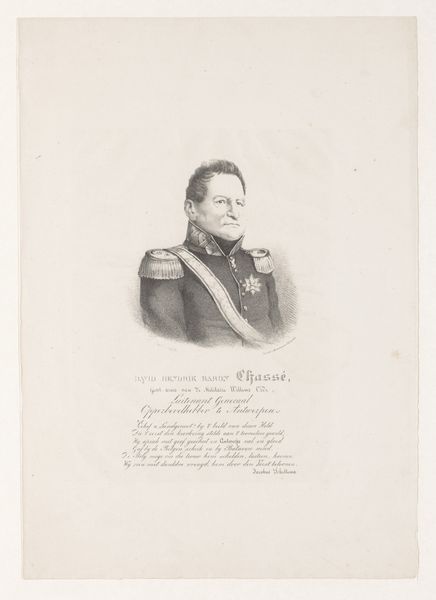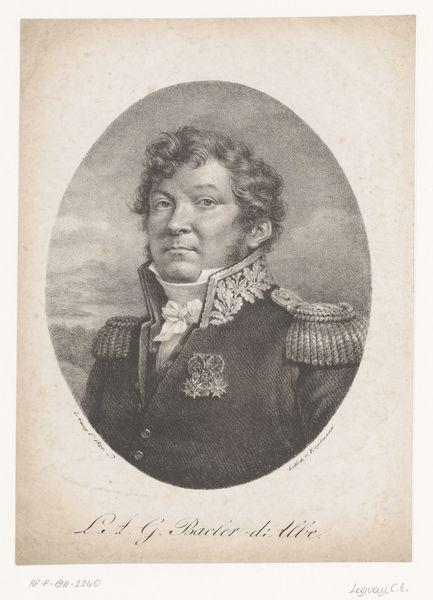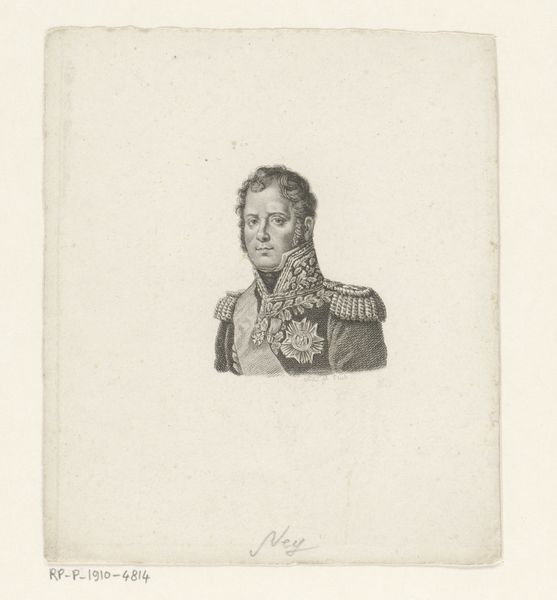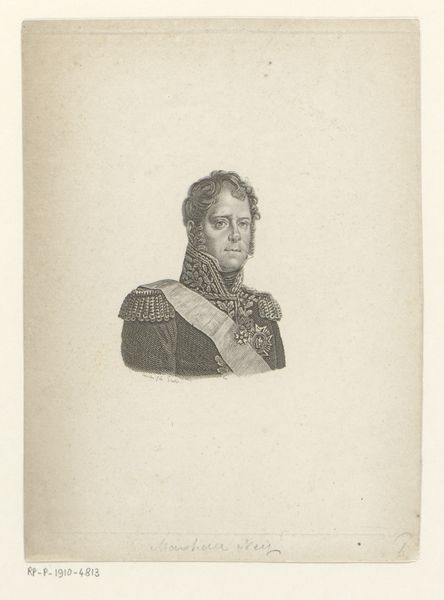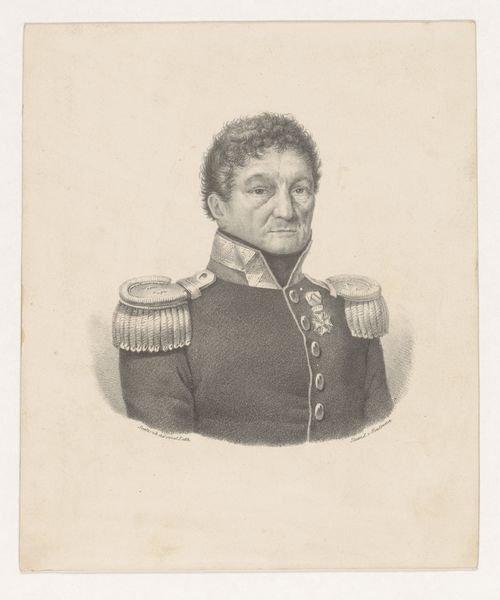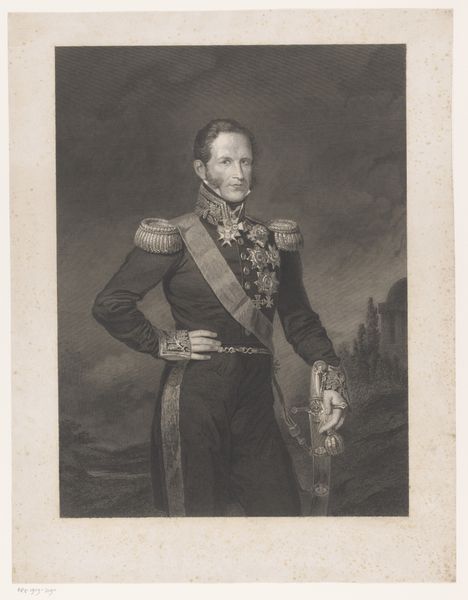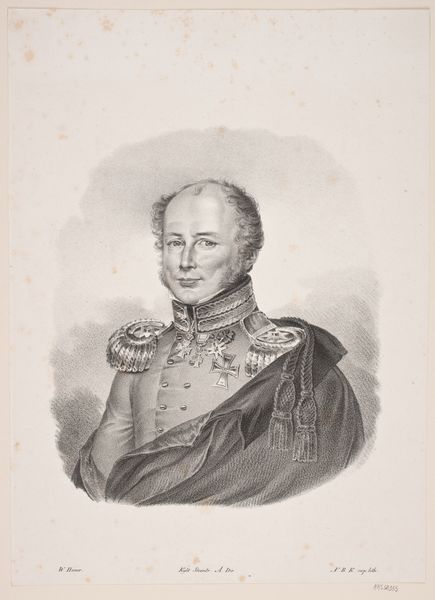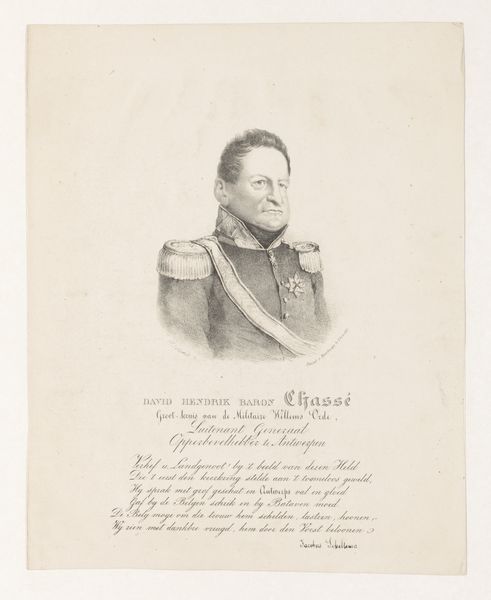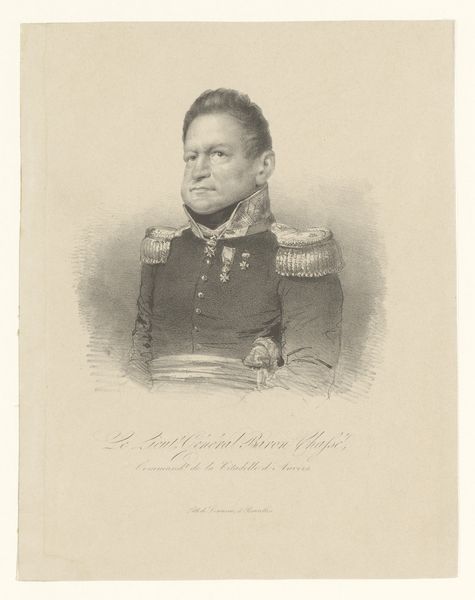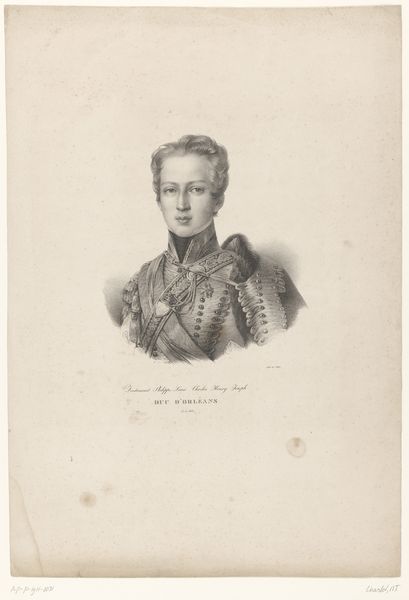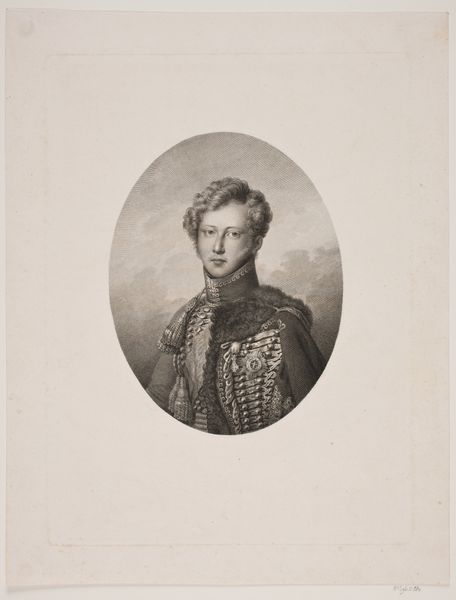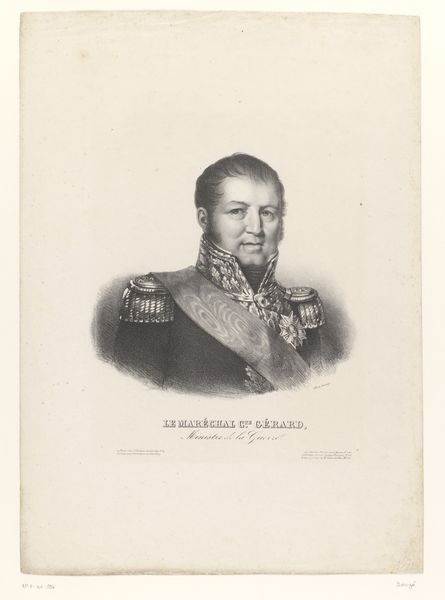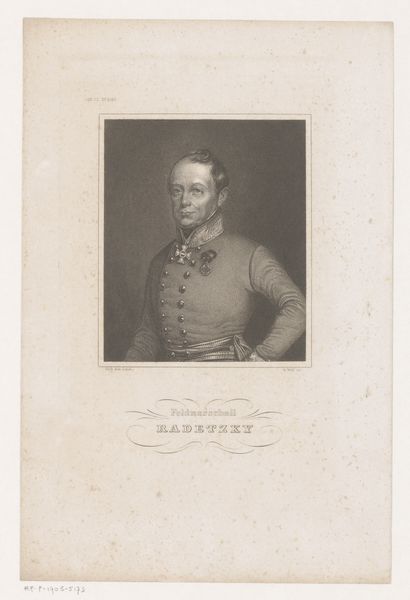
lithograph, print, paper
#
portrait
#
lithograph
# print
#
paper
#
romanticism
#
history-painting
Dimensions: 409 mm (height) x 291 mm (width) (bladmaal)
Curator: Welcome! We’re standing before “Frederik Conrad Holstein,” a lithograph print from 1825 by L. Frænckel, currently residing here at the SMK. Editor: My first impression is one of stoicism and maybe even a touch of severity. The man portrayed emanates this powerful presence from within a rather tight oval frame. Curator: It’s a meticulously crafted piece. Notice the precise lines and tonal variations Frænckel achieves using lithography. The gradations are quite subtle. Editor: Absolutely, and it begs the question: who was permitted such an elevated representation? He seems weighted down not just by his heavy regalia, but also the expectations and structures surrounding his rank and time. Curator: Frederik Conrad Holstein was an important military figure, which explains the uniform laden with decorations. Frænckel captures the weight of authority, quite literally in those dense shoulder cords and medals. This romantic-era portrait emphasizes a distinguished career. Editor: And it’s precisely the trappings of authority that fascinate me. The emphasis on external symbols hints at how identity was constructed and validated in 19th-century Denmark. Was such finery an earned achievement, or something enforced upon Holstein, an actor forced to conform to predetermined expectations? Curator: His gaze meets ours head-on, direct and unwavering, as if wanting to project capability. But that slight softening around the mouth suggests an intelligence, not just unyielding discipline. Editor: It is compelling as an exploration into the relationship between the individual and systems of power, however. A glimpse behind the pomp allows viewers to begin conversations surrounding the function of those symbols that reinforce social hierarchies. Curator: A thought-provoking reflection, to be sure. Frænckel has created an enduring study not only in representation, but in the artistry of lithography itself. Editor: Precisely! And engaging with pieces such as these invites audiences to dissect and examine the structures—visible, in Holstein's medals, and less so, in the forces that framed his role in the era.
Comments
No comments
Be the first to comment and join the conversation on the ultimate creative platform.
